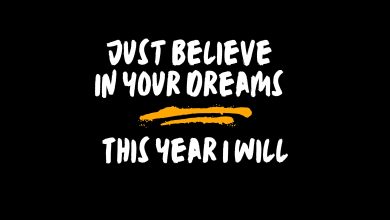5 Signs You’re Headed Toward Burnout And How to Stop It .

Burnout is an overly familiar part of our working landscape — something the World Health Organization (WHO)Trusted Source calls an “occupational phenomenon”, and which seems inextricably linked with the psychological burden of modern employment.
As the American Psychological Association (APA) notes, burnout is at an all-time high across numerous professions, spurred on by the COVID-19 pandemic and the potent mix of personal, professional, and health-related stress.
What is burnout, and how bad is it?
Burnout is the result of chronic stress, usually (though not exclusively) workplace stress.
“If the employee feels overwhelmed, under-appreciated, and powerless to make effective changes in their job duties, demands, or workplace culture, then burnout is likely to occur,” says Dr. Josh Briley, a clinical psychologist and fellow at the American Institute of Stress.
Crucially, burnout goes far beyond your job performance. While your work may suffer, burnout can extend into every part of your life, and drastically increase the likelihood of a variety of serious medical conditions.
“People in chronic burnout are much more likely to develop anxiety, insomnia, or depression. Sustained stress also increases the risk for physical illness as well,” Briley says.
He notes that high blood pressure, heart problems, high cholesterol, and diabetes are just some of the conditions that have been linked to chronic stress.
5 common signs of burnout
Wondering if you’re approaching burnout? Here are some common signs, feelings, and symptoms you may experience.
1. Exhaustion
Feeling overwhelmed psychologically can manifest in physical exhaustion and fatigue, which can make it harder to address the root causes of your burnout.
Basic tasks, like taking or shower or cooking a meal, for example, can feel more burdensome, while a long day of work can feel impossible to get through. If you feel more tired than usual or are at a loss as to how to increase your energy, it’s possible that burnout is rearing its head.
2. Feelings of dread and lack of motivation
Briley says that burnout often coincides with feelings of “anxiety or a sense of dread related to [your] job, especially after a couple of days off.”
If you’re experiencing burnout, you may find that even after the weekend or a vacation, your motivation and enthusiasm levels are noticeably low. Procrastination is another key sign since you may be more unwilling to address tasks at work.
It’s perfectly possible to dislike your job and avoid burnout — not everyone has the luxury of only doing work they enjoy. But if you find the days increasingly hard to get through, your quality of work plummeting, and the prospect of working again even after a rest putting you into a state of fear, burnout is likely in the cards.
3. Difficulty sleeping
Sleep hygiene is a crucial part of our health. Poor sleep hygiene can contribute to burnout, while burnout itself can affect your quality of sleep, causing a vicious cycle of restlessness and insomnia.
Several experts we spoke with noted how burnout could make falling or staying asleep more difficult, alongside other physical symptoms, such as headaches, bodily tension, and stomach problems.
4. Inconsistent appetite
Our relationship to food can also be a clear indicator of something going wrong. Although different people react in different ways when it comes to food, losing your appetite or binging on snacks may be signs that something isn’t right.
Briley states that, during periods of burnout, your “appetite is also affected. People may crave ‘comfort foods,’ find their appetite is significantly increased, or lose their appetite, especially in the morning before going to work.”
5. Cynicism and irritability
Mood can be the first thing to plummet in the early stages of burnout. When we spoke with Nicole O’Connor, care services chief of staff at mindfulness app Headspace, she told us that “increased cynicism or a blow to one’s confidence” is a common occurrence, coinciding with “decreased productivity and focus.”
She also noted that if you’re someone who’s typically in a good mood, but you’re finding yourself being more frustrated or irritated, this can be a sign that you’re approaching burnout. As a result, personal and professional relationships can suffer.
5 ways to address burnout
1. Rethink your screen time
Modern life is plagued by digital devices and screens, and it’s not unusual to be staring them in the face throughout the working day and beyond. But it’s crucial to stay on top of your screen usage where you can, and be mindful of the pressures of the always-on digital life.
“Many of the telltale signs of regular burnout are similar to what some have dubbed ‘screen burnout’ – or ‘Zoom burnout’ during the pandemic,” says Becca Caddy, science reporter and author of Screen Time: How to make peace with your devices and find your techquilibrium.
“While our devices can make us feel more connected to others, too much time on screens can be detrimental to our well-being. One big problem is that because our tech is always on there’s an expectation that we are, whether that’s catching up on Twitter news or replying to emails.”
Caddy recommends “only checking emails between 9 a.m. and 6 p.m. or setting limits on your social media apps so you can’t access them after 8 p.m. That way time spent scrolling doesn’t impact your sleep.”
2. Focus on self-care
Self-care is a crucial practice, not just for addressing burnout but preventing it in the first place.
Briley recommends that people “stick to or start self-care activities, such as exercise, meditation, and a healthy diet (to name just a few). Also, ensure you disconnect from work during your time off, meaning you fully engage in activities you enjoy, with people you love, and minimize the amount of time you vent your frustrations about work.”
3. Take a break
If there’s ever a time to take time off, it’s when burnout hits. Burnout is likely a sign of having too much on your plate. Seeking doctor-approved leave, alongside standard PTO from your employer, can be crucial to give yourself the time and headspace to work through what’s happening.
Briley also stresses the importance of getting away from your desk: “Spending time in nature, such as walking in a park or opening the windows to better hear and smell the rain, have been shown to reduce both acute and chronic stress.”
4. Talk with a mental health professional
If you find yourself having difficulties with burnout, it can be very hard to dig yourself out. It’s worth looking at which talk therapies are available to you, either through state-provided services or private therapists and clinics. But this can be in tandem with the other methods in this list, especially if you’re on a lengthy waiting list to access the therapy you need.
“The avenue for recovery for someone experiencing burnout will likely depend on the severity,” says O’Connor, from Headspace. “For some, adopting a meditation and mindfulness practice and setting more firm work-life boundaries may be sufficient. For others, seeing a behavioral health coach or therapist might be a necessary step so they have a day-to-day guide on the road to burnout recovery.”
5. Be open to change
An openness to change was a recurring theme among the experts we spoke with. It’s difficult to envision a different life, or a different relationship with work, when your energy and motivation is at its lowest ebb.
But while an increase in self-care routines or mindfulness habits can be beneficial, it’s also important to look at bigger structural changes you can make in your life — whether that’s changing your job, reducing your hours, or negotiating a different set of responsibilities with your employer.
If the option is there, you can also look for other opportunities for employment. Working somewhere that constantly makes you feel burnt out may negatively affect your mental health in the long term, and you shouldn’t force yourself to stay if you have the ability to go elsewhere.
As O’Connor says, “the road to recovery not only requires support from our employers, but often demands us to press reset on the relationship we have cultivated with work over the years.”
It’s not a simple task, O’Connor says, but “finding the courage to take on this challenge is an opportunity to establish new work-life balance boundaries and mindfulness practices that benefit your relationship with work for the future.”



